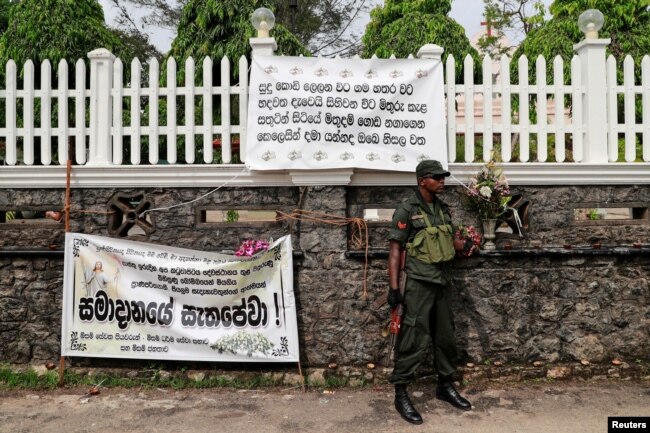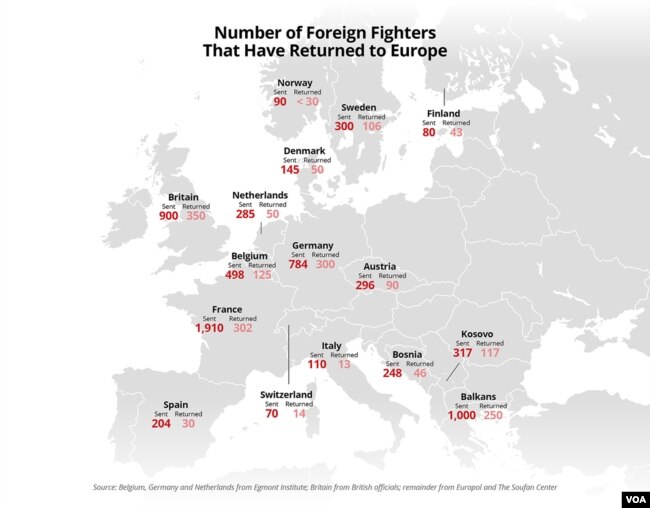It was Easter Sunday in Sri Lanka, and the joy and serenity filling the country’s churches were about to be shattered by a series of suicide bombings soon to be claimed by the Islamic State terror group, VOA news reports.
Until that point, few counterterror officials or analysts had raised concerns about IS in Sri Lanka. Unlike other parts of the world where IS had established provinces, like in Afghanistan, Libya or the Philippines, there had been little IS-related propaganda in the South Asian island nation.
Nor had Sri Lanka sent many fighters to IS’s self-declared caliphate. Officials there had put the number at fewer than 40, warning an unspecified number had been under surveillance.
But U.S. intelligence officials quickly confirmed the April 21 attacks were at least inspired by IS. In the weeks since, Sri Lankan officials steadily built a case that the attackers had multiple connections to the terror group.
“We are the victims of global terrorism,” Prime Minister Ranil Wickremesinghe told parliament on May 7. “Even if we take all those involved in the organization in Sri Lanka into custody, the terrorists can use many ways to undermine the country.”
Wickremesinghe’s comments echoed fears expressed by numerous U.S. intelligence and counterterrorism officials that even without formal ties, IS has learned to make the most of sometimes loosely aligned criminal and terrorist networks in order to push its agenda.
“They have been, unfortunately, the world’s pioneer in learning how to radicalize and mobilize people to violence in the virtual world,” Lt. Gen. Michael Nagata, the National Counterterrorism Center director of strategic operational planning, said at a conference in September 2018.
‘Fighters have scattered’
More recently, U.S. intelligence officials have warned that foreign fighters could find refuge with IS branches or networks in more than a dozen other countries, including Turkey, which for years had served as a gateway for foreign fighters looking to enter Syria.
“ISIS fighters have scattered,” said Seth Jones, director of the Transnational Threats Project at the Center for Strategic and International Studies, using an acronym for the group. “Those that haven’t been killed or detained may have gone into Turkey. Some have moved to other battlefields.
“So, keeping track of them at a point, like now, can be difficult.”
For those foreign fighters, linking up with IS networks elsewhere is not easy. Even in countries with porous borders, security services have been on alert. And blending in can be a challenge.
“Islamic State militants traveling overseas from Iraq and Syria regularly use forged documents and passports from a range of countries, physical disguises and broken travel routes as countermeasures to evade detection,” said Jade Parker, a former counterterrorism analyst in support of U.S. military activities.
But even those evasive measures are not always enough.
“Differences in their physical appearance from the local populations may make their presence more conspicuous and detectable by immigration, military and security authorities,” Parker said.
Criminal networks, which played a large role in getting foreign fighters to Syria and Iraq, have also been degraded.
Very little movement
“It is quite something different now than a couple years ago, when jihadis still had a functioning network of smugglers,” said Thomas Renard, a senior research fellow at the Egmont Institute in Brussels.
“Since 2016, the flow of travels back and forth has almost entirely stopped,” he said. “There are still some people attempting to travel to jihadi areas, but in marginal numbers.”
Yet some foreign fighters have been successful. A recent Egmont study looking at fighters from Egypt, Morocco and Tunisia estimated that of the more than 5,000 fighters who went to Iraq, Syria or Libya, more than 1,000 returned home.
Smaller numbers have made their way to Southeast Asia.
Hundreds, too, have made their way back to Europe, which has long battled an IS terror network that has used both foreign fighters and local recruits to launch terror strikes, like the November 2015 attack in Paris.
By 2018, the European police agency Europol estimated about 1,500 foreign fighters had returned to the continent.
Some countries, like Bulgaria and Romania, have voiced concerns that foreign fighters were trying to use them as part of transit routes back home. And Hungarian intelligence has warned that a significant number of the approximately 1,000 foreign fighters from the Balkans will seek to return home if possible.
At the same time, European authorities indicate the journey is becoming increasingly difficult.
Several EU member states have said the number of foreign fighter returnees has declined to a trickle, with the numbers dropping dramatically starting in 2016.
Still, there is concern that many of those who flocked to the IS caliphate have yet to be accounted for, especially for countries like France, from which almost 2,000 fighters went to Syria and Iraq.
“Intelligence agencies don’t have a clear understanding of the whereabouts of all foreign fighters and their families in Iraq and Syria,” the Center for Strategic and International Studies warned in a December 2018 report, estimating that as many as 700 adults, including 300 fighters, were still abroad.
U.S. counterterrorism officials have echoed such concerns, and recently raised the estimated number of foreign fighters from Western countries to 8,000 from 5,000 as intelligence efforts have resulted in a more complete picture.
Hidden fighters
Researchers also warn that Britain, France and other European countries could be vulnerable to a hidden wave of returning fighters, perhaps even some who left for Syria and Iraq as children.
“Even if you have half a dozen of these people over the course of five years in Europe, that settle in Germany and then decide that they want to strike out, the propaganda effect of that PR [public relations] is pretty damaging,” said Colin Clarke, a senior fellow at the Soufan Center, a global security research group.
“Are the mechanisms in place in Europe and elsewhere to deal with the threat, whether that’s a trickle of individuals, whether it’s dozens over the course of three to four years? Has the West done the necessary legwork?” Clarke said.




